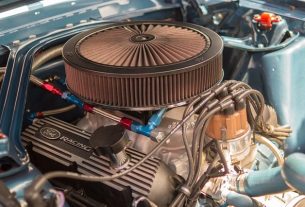Engaging in home repair and maintenance is not just about fixing things; it's a skill set that enhances your capabilities and brings a sense of accomplishment. DIY projects can lead to mishaps, but with the right preparation and knowledge, you can tackle issues like leaky faucets or paint finishes successfully. A systematic approach is key: evaluate the task, gather necessary tools and materials, and execute repairs with precision to maintain your home's functionality and longevity. Deciding between DIY repairs or professional help depends on the complexity of the issue; simple tasks like unclogging toilets or minor wall repairs can be managed by homeowners, while intricate problems like electrical rewiring or structural issues should be left to professionals who are trained and knowledgeable about building codes and safety standards. As you grow in your repair skills, regular inspections and maintenance become crucial for preventing larger issues. Remember, the art of home repair and maintenance is a blend of practicality and skill, ensuring that your living space remains safe, functional, and comfortable. Always prioritize safety, especially with electrical or plumbing work, and educate yourself on the specifics of each repair to execute it correctly, efficiently, and effectively, thereby saving time and resources in the long run. Mastering home repair and maintenance is an invaluable investment for maintaining a well-maintained household environment.
When a DIY project takes an unexpected turn, leaving you with more questions than answers, a handyman’s expertise can swiftly transform chaos into order. This article serves as your roadmap through the common pitfalls of home repair and maintenance, offering solutions for those moments when your best efforts fall short. We’ll guide you through identifying when to tackle issues solo or wisely call in a pro, all while equipping you with insights from seasoned handymen. Dive into “Handyman Solutions for DIY Failures” and master the craft of maintaining your home with confidence.
- Navigating Common DIY Mishaps: A Handyman's Guide to Home Repair and Maintenance Success
- Tackling Frequent Fixes: When to DIY vs. Call a Professional for Home Repair and Maintenance
- Mastering the Art of Home Repair and Maintenance: Tips and Tricks from Seasoned Handymen
Navigating Common DIY Mishaps: A Handyman's Guide to Home Repair and Maintenance Success

Embarking on do-it-yourself projects can be a rewarding experience, offering both skill development and the satisfaction of a job well done. However, even with careful planning and execution, common DIY mishaps can occur. Home Repair and Maintenance are critical areas where a handyman’s expertise shines, providing solutions to unexpected challenges. When faced with a leaky faucet, a stubborn paint job, or an electrical hiccup, professional guidance can transform these frustrating moments into opportunities for learning and improvement. A seasoned handyman knows that preparation is key; understanding the tools, materials, and techniques specific to each task is essential for success. For instance, before attempting to fix a dripping faucet, one should familiarize themselves with the different types of faucets and the necessary steps to disassemble and repair them. Similarly, proper surface preparation and selection of the right paint type and application methods are crucial for achieving a flawless finish. In the realm of Home Repair and Maintenance, a handyman’s approach is methodical; they assess the issue at hand, gather the appropriate resources, and execute the repair with precision. This proactive mindset ensures that minor issues do not escalate into major problems, maintaining the integrity and functionality of your home.
Tackling Frequent Fixes: When to DIY vs. Call a Professional for Home Repair and Maintenance

When homeowners encounter issues in their residences, determining whether to tackle the repairs themselves or call a professional is crucial for effective home repair and maintenance. DIY projects can be both rewarding and cost-effective; they empower individuals with the skills to maintain their homes efficiently. Common fixes like unclogging a toilet, replacing light fixtures, or patching small holes in walls are ideal candidates for a DIY approach, especially when guided by clear instructions from reputable sources. These tasks generally require minimal expertise and tools, making them accessible for enthusiastic homeowners to handle.
However, larger or more complex issues such as electrical rewiring, major plumbing overhauls, or structural damage demand the expertise of seasoned professionals in home repair and maintenance. Such projects often involve intricate knowledge of local building codes, safety protocols, and technical skills that are honed through specialized training. Attempting to resolve these without professional assistance can lead to further complications, potentially voiding warranties or even causing harm. It’s always prudent to assess the complexity of the task at hand; when in doubt, consulting with a qualified professional is the safest and most efficient approach to ensure that home repair and maintenance tasks are completed correctly and endure over time.
Mastering the Art of Home Repair and Maintenance: Tips and Tricks from Seasoned Handymen

Engaging in home repair and maintenance is a skill that combines both artistry and practicality, ensuring your living space remains safe and comfortable. Seasoned handymen often possess a wealth of knowledge passed down through experience or learned from countless projects. Their expertise lies not only in the technical aspects of repair work but also in understanding the nuances of different materials and tools. To master home repair and maintenance, start by familiarizing yourself with the basic tools and their uses. A well-equipped toolbox is your first line of defense against DIY failures. It should include essentials like a hammer, screwdrivers, pliers, wrenches, and a tape measure, among others. Beyond tools, absorb as much knowledge as possible from reliable sources; this could be instructional videos, books, or mentorship from experienced handymen.
As you progress in your home repair journey, develop a systematic approach to tackling issues. Begin with a thorough inspection of your home, noting any signs of wear or potential hazards. Regular maintenance tasks like cleaning gutters, checking for leaks, and lubricating moving parts are crucial to prevent more significant problems down the line. When confronted with a repair issue, prioritize safety above all else. Always turn off the power and water supply before attempting electrical or plumbing repairs. Additionally, take the time to research the specific problem you’re facing, understanding both its cause and the appropriate solution. This approach not only enhances your skill set but also ensures that every repair is done right the first time, saving you time and money in the long run.
In conclusion, home repair and maintenance are integral to ensuring a safe and comfortable living environment. When faced with common DIY mishaps, one can navigate these challenges effectively by leveraging the expert advice found in “Navigating Common DIY Mishaps: A Handyman’s Guide to Home Repair and Maintenance Success.” This guide empowers homeowners to tackle frequent fixes confidently, offering clear distinctions on when it’s advisable to proceed with a DIY approach or to call upon professional handymen. The article also provides seasoned tips and tricks, collated from reputable handymen, which serve as valuable resources for anyone looking to master the art of home repair and maintenance. By combining these insights with hands-on practice, homeowners can achieve successful repairs and maintain their homes in top condition, ultimately enhancing their quality of life.



